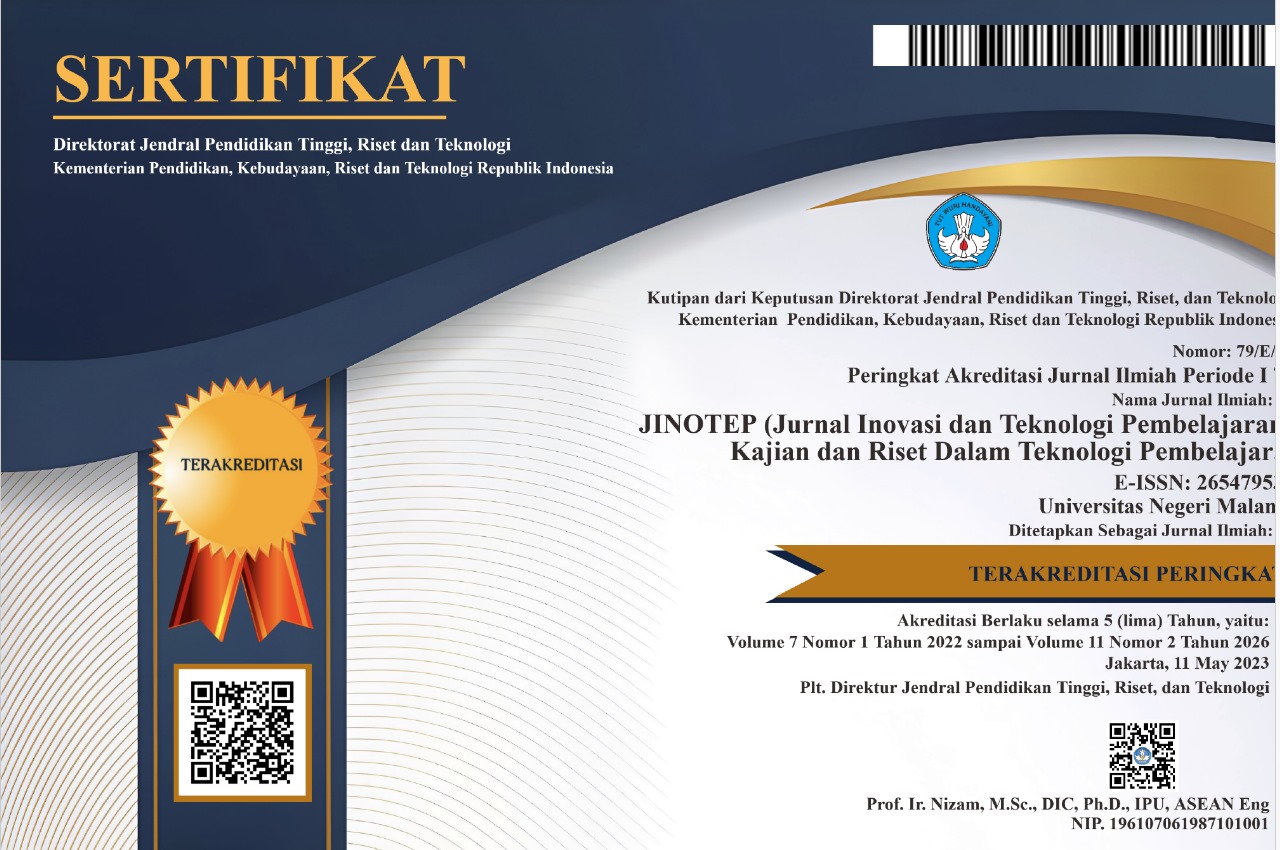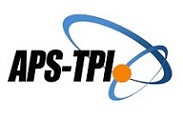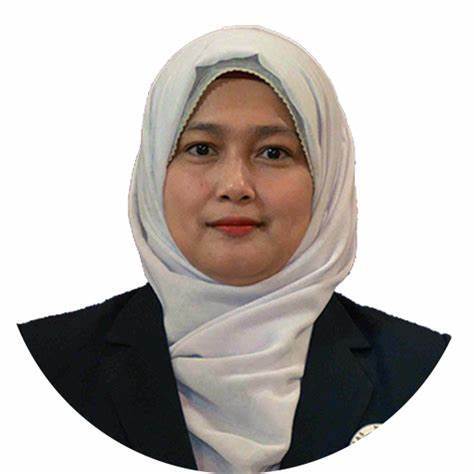Pengembangan Bahan Ajar Berbasis Web untuk Matakuliah Desain Pesan
Abstract
Abstrak: Tujuan penelitian dan pengembangan ini adalah menghasilkan bahan ajar berbasis web yang layak dan valid untuk matakuliah desain pesan di Program Studi Teknologi Pendidikan, Universitas Negeri Makassar, dan efektif meningkatkan hasil belajar mahasiswa. Model penelitian dan pengembangan yang digunakan adalah model Lee & Owens (2004). Hasil ujicoba terhadap ahli, pengampu matakuliah dan mahasiswa menunjukkan bahan ajar berbasis web layak dan valid digunakan sebagai bahan ajar berbasis web dalam matakuliah desain pesan di Program Studi Teknologi Pendidikan Universitas Negeri Makassar, dan efektif dalam meningkatkan hasil belajar mahasiswa.
Abstract: The purpose of this research and development is to produce appropriate and valid web-based teaching materials for message design subjects in the Educational Technology Study Program, Makassar State University, and effectively improve student learning outcomes. The research and development model used is the model of Lee & Owens (2004). The results of trials on experts, lecturers and students showed decent and valid web-based teaching materials used as web-based teaching materials in message design subjects in the Makassar State University Education Technology Study Program and were effective in improving student learning outcomes.
Keywords
Full Text:
PDFReferences
Clark, R. C. & Mayer, R. E. 2003. E-Learning and The Science of Instruction. Proven Guidelines for Consumers and Designer of Multimedia Learning. San Fransisco: John Wiley & Sons, Inc.
Dick,W. & Carey, L. 1978. The Systematic Design of Instruction. Illinois: Scott, Foresman and Company.
Ekawaty. 2012. Pengembangan Bahan Ajar Kimia Berbasis Web Pada Materi Elektrokimia Berorientasi Chemoentrepreneurship Untuk Siswa Sekolah Menengah Kejuruan (SMK). Tesis tidak diterbitkan. Malang: PPs UM.
Fleming, M. dan Levie, W. H. 1993. Instructional Message Design: Principles from the Behavioral and Cognitif Sciences (Second Edition). Educational Technology Publications:Engglewood Cliffs, New Jersey.
Herridge Group Inc. 2004. The Use of Traditional Instructional Systems Design Models for eLearning. Herridge Group Inc.
Horton, W. 2012. E-Learning by Design (2nd Edition). San Francisco, CA: Pfeiffer.
Lee, W. W. & Owens, D. L. 2004. Multimedia Based Instructional Design (Second Edition). San Francisco CA: John Wiley & Sons, Inc.
Petterson, R. 2003. Gearing Communications to the Cognitive Needs of Students: findings from visual literacy research. IIID, Preparing for the Future of Knowledge Presentation, Chicago, USA.
Pina, A. A. 2010. An Overview of Learning Management Systems. Dalam Kats, Yevim (Ed), Learning Management System Technologies and Software Solution for Online Teaching: Tools and Aplications (hlm.1-9). New York: IGI Global. (CD-ROM: Learning Management System Technologies and Software Solution for Online Teaching: Tools and Aplications, 2010).
Reigeluth, C. M., & Carr-Chellman. A. A. 2009. Understanding Instructional Theory. Dalam Instructional-Design Theories and Models, Building a Common Knowledge Base. Volume III. (Reigeluth, Charles M., & CarrChellman. Alison A, Ed). New York. Routledge.
Smaldino, S. L., Lowther, D. L., & Russel J. D. 2008. Instructional Technology and Media for Learning 9th Edition. New Jersey. Pearson Education, Inc.
Wang, S-K. & Hsu, H-Y. 2009. Using the ADDIE Model to Design Second Life Activities for Online Learners. TechTrends, Volume 53 Number 6. November-December, 2009: 76-81. (CD-ROM: TechTrends, 2009).
Widodo, R. B. 2008. Pengembangan Bahan Ajar Digital Dasar Rekayasa Perangkat Lunak Untuk Mahasiswa Teknologi Informasi Menggunakan Teori Elaborasi. Tesis tidak diterbitkan. Malang: PPs UM.
DOI: http://dx.doi.org/10.17977/um031v2i22016p323
Refbacks
- There are currently no refbacks.
Copyright (c) 2016 Mesach Dayunison Parumbuan

This work is licensed under a Creative Commons Attribution-ShareAlike 4.0 International License.
======================================================================
Jurnal Inovasi dan Teknologi Pembelajaran published by Universitas Negeri Malang in collaboration with the Asosiasi Program Studi Teknologi Pendidikan Indonesia (APS TPI) and Ikatan Profesi Teknologi Pendidikan Indonesia (IPTPI) with a MoU.
Publisher Address:
Educational Technology Laboratorium, Building D5, 1st Floor
Faculty of Education, Universitas Negeri Malang
Semarang St. No. 5, Malang City, East Java Province, Postal Code 65145
Email: jinotep.fip@um.ac.id
======================================================================

JINOTEP is licensed under a Creative Commons Attribution-ShareAlike 4.0 International License.
JINOTEP Statistics (Since July 13th, 2020)


.png)




.png)
1.png)
1.png)
4.png)
2.png)
1.png)
1.png)
.png)


_3.png)





1.png)
.png)